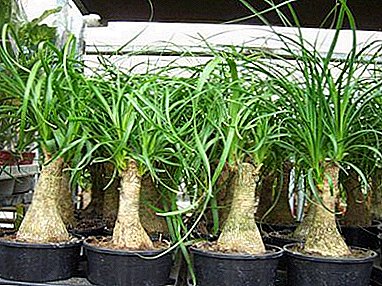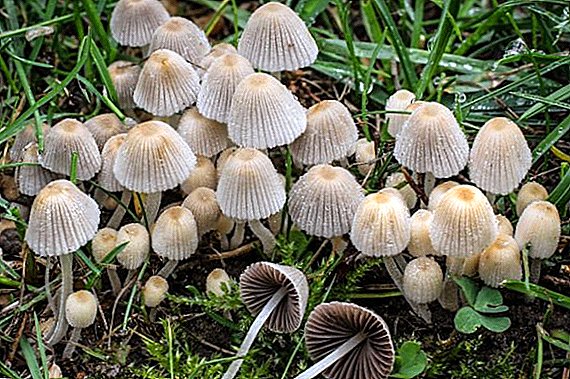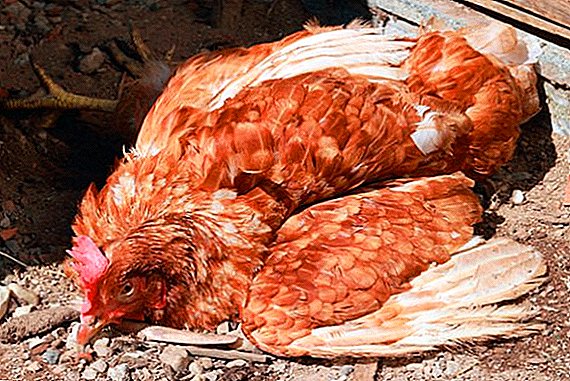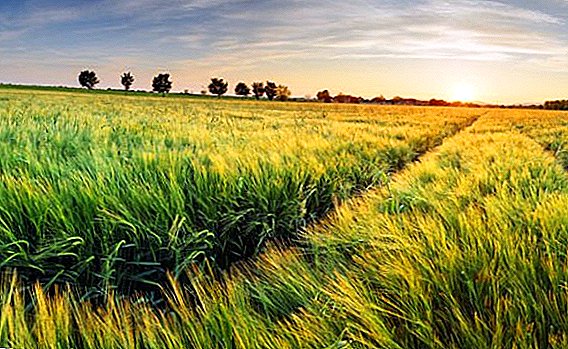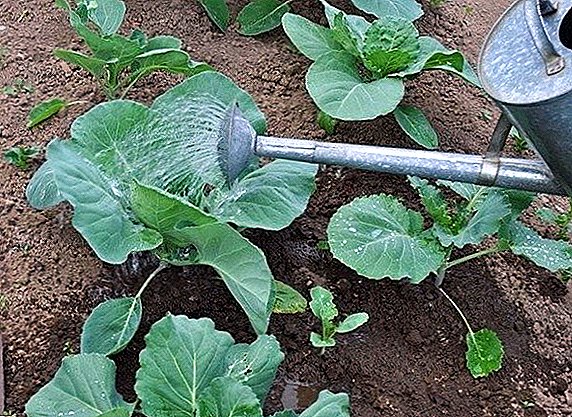 Cabbage is one of the main vegetable crops. It is planted in almost all countries of the world for the purpose of consumption, and also as a medicinal and ornamental plant. The fact that no vegetable garden can do without cabbage suggests that caring for it is not very difficult. However, a bountiful harvest can be obtained only with the organization of proper watering and fertilizing. Tips on how often to water the cabbage in the open field in the heat and in normal weather, we have selected for you below.
Cabbage is one of the main vegetable crops. It is planted in almost all countries of the world for the purpose of consumption, and also as a medicinal and ornamental plant. The fact that no vegetable garden can do without cabbage suggests that caring for it is not very difficult. However, a bountiful harvest can be obtained only with the organization of proper watering and fertilizing. Tips on how often to water the cabbage in the open field in the heat and in normal weather, we have selected for you below.
Conditions for watering
Cabbage needs sufficient moisture intake. The fact is that the root system is small, but the leaf apparatus is powerful. The leaves give a lot of water, but the roots do not cope with the task of replenishing moisture.
Familiarize yourself with the cultivation technology of such types of cabbage: Beijing, broccoli, cauliflower, kohlrabi, pak-choi, kale, romanesco, red cabbage, savoy.
This is especially true of the dry period, since the cabbage root system is located in the upper soil layer, which first dries out in heat. Therefore, watering is very important and necessary for its normal development and life support. Proper water regime leads to normal growth of internal leaves, the formation of a dense head of cabbage and the accumulation of maximum plant mass.

It is recommended to water vegetable culture in the morning or evening hours. So you can avoid burns, because the sun is still or not too strong. In addition, during lunchtime, the moisture evaporates very quickly from the soil, and the plant simply does not have time to get enough of it.
Water requirements
Cabbage sensitive and demanding on water parameters. Improper fluid temperature can cause undesirable effects. Watering with cold water leads to diseases, improper development of individual organs, the death of too young plants, etc. Moreover, compliance with the temperature regime for watering will be important both at the seedling stage and at the stage of planting already planted in open ground.
Important! Requirements for the parameters of water for irrigation are the same for all types and varieties of cabbage planted in open or closed ground.
Therefore, starting with the seedlings, let us make it a rule to take only a certain temperature for irrigation. from 18 ° С to 23 ° С. This is the so-called "room temperature". It is possible to achieve such parameters by pouring water in advance for watering from a tap to a bucket so that it warms up normally. It is important that the liquid does not overheat, since watering with hot water is also undesirable.
Before storing water, you will observe another important parameter - watering should be carried out only with settled water. Also suitable for irrigation distilled water and water from reservoirs.

How often to water the cabbage
In addition to the water temperature for irrigation, gardeners are also interested in how often cabbage should be watered. After all, this plant is moisture-loving and, not receiving a sufficient amount of moisture, may die or not give proper yield. The frequency of watering will depend on several parameters:
- from ripening;
- on the species;
- on soil type.
Did you know? Scientists believe that the name of the cabbage is from the ancient Greek and Roman words "Kaputum", which translated means "head". There are also versions that the ancestor of the name of the vegetable was the word "cap" (head), belonging to the Celts.
Depending on ripening time
Early cabbage must be watered at least three to four times per season, medium and late at least five to six times. The optimal frequency of irrigation:
- for early cabbage: two days after planting, after 8-10 days thereafter;
- for late cabbage: the first time - on the day of planting, the second - after a week, the third-fifth - in the phase of formation of the outlet, the sixth-eighth - in the period of the head formation, the ninth-tenth - when the head is technically ready.

Did you know? Cabbage is among the vegetables, whose giant representatives hit the pages of the Guinness Book of Records. The largest white cabbage was grown by American John Evans. She weighed 34.4 kg. The same person holds the record for growing huge cauliflower - weighing 14.1 kg.Growing early varieties, it is necessary to ensure that the level of soil moisture does not fall below 80%, late - not less than 75%. For early varieties, the most intense should be moistening in June, for later ones - in August. The lack of moisture affects early varieties faster.
From the view
The frequency of irrigation depends heavily on the type of cabbage. Our recommendations concerned white species. If you are wondering how often to water the cauliflower, then it is advisable to do this weekly, in dry weather - three times a week. The recommended volume - 10 liters per 1 square. m
When growing cabbage, many are wondering whether it is necessary to dive seedlings, than to fertilize, how to save the crop.
Red view - one of the most drought-resistant, because it is well developed root system. This cabbage needs to be watered infrequently.
When growing broccoli the soil should be constantly hydrated. It is necessary to ensure that the 40-centimeter layer is wet. Watering is done weekly. Water consumption - 12-15 liters per 1 square. m

Kohlrabi and Brussels require frequent, abundant and regular irrigation. Recommended standards for these species can be considered as those that are prescribed for the albino species.
Chinese cabbage watered to a depth of 20 cm weekly. The best way to water is sprinkling.
From soil type
Vegetable crops grown on light soils require at least five to six waterings per season. For heavy and dense soils, less frequent moistening is needed - three to four times per season.
To eat cabbage is loved not only by us, but also by many pests: aphid, whitefly, bear, scoops, slugs, fleas.
From the period of development
If you are interested in the question of how often to water the cabbage after landing, then it must be done every two to three days. During the growing season, one plant needs at least 2-3 liters at a time or 8 liters per 1 square. m. Such intensity will be required for two to three weeks.
The greatest hydration of vegetable crops is necessary during the formation and growth of heads. The rest of the time, the number of irrigations is gradually reduced. It will be enough once a week. In this case, the volume of liquid is increased to 12 liters per 1 square. m.

The flow of moisture to the plant should be stable. If at any of the stages of development there was a shortage of it, it will definitely affect the vegetable. So, for example, the lack of sufficient moisture in the phase of inociation, and then the establishment of abundant watering, will lead to active growth of the inner leaves and, accordingly, tearing of the outer ones. Therefore, cracks will appear in the vegetable.
After the formation of heads, two or three weeks before their harvesting, it is necessary to stop wetting the soil. Late varieties stop watering a month before cutting.
Important! Excess moisture can also lead to negative consequences. It lengthens the development period of cabbage, worsens its transportable qualities by an order of magnitude, reduces the length of keeping quality.
Cabbage and drip irrigation
Cabbage is recommended to be watered in three ways:
- along the furrows;
- sprinkling;
- drip.
It is very good to water a vegetable in an open ground in the drop way. After the vegetable crop has been planted, it is necessary to lay an irrigation pipe. It is recommended to adhere to the following parameters:
- pipe diameter - 1.6 cm;
- intervals between water outlets - 30 cm.

The average irrigation rate for early varieties before the beginning of the formation of heads is 55 liters per 1 square. m, during the maturation of the heads - 70 liters per 1 square. m. For later varieties, this rate is: before the heading - 90 liters per 1 square. m, in the period of heading - 100-110 liters per 1 square. m
The maximum level of pre-irrigated soil moisture for early cabbage in the phase before heading is 80% HB, during the heading period it is 90% HB. For later varieties, these norms will be: 75% before heading, 80% - in the phase of forming heads.
The soil wetting depth for early and late varieties: before the formation of heads - 25-30 cm, during the period of formation of heads - 35-40 cm.
The duration of watering for all varieties of vegetables should be: before the formation of heads - 3 hours, during the formation of heads - 2-2.5 hours
Watering schedule:
- in forest-steppe areas - five-six (in wet weather), six-seven (in a dry year);
- in the steppe areas - 8-11 (4-6 before heading, 4-5 after).
The interval between watering should be from 8 to 10 days. Adjustments to the schedule are made depending on the mechanical composition of the soil and the presence of precipitation.

Did you know? It has not yet been established what exactly the plant became the progenitor of cabbage. There are several versions about this. According to research by some scientists, the coast of the Mediterranean Sea should be considered its birthplace. Others tend to think that the vegetable has spread from the territory of modern Georgia.
The combination of watering and feeding
It is good to carry out waterings along with top dressings. When growing commercially, one or two NPK20 feedings will be required. At the same time, during the second fertilizer, it is necessary to reduce the amount of nitrogen and increase the amount of potassium.
At home should be made two to four dressings. Watering and fertilizing should be combined with loosening the soil.
Cabbage is an important and valuable vegetable plants. It contains a number of vitamins (A, B1, B6, C, K, P), fiber, enzymes, phytoncides, fats, micro- and macroelements (phosphorus, sulfur, potassium, calcium, etc.), and at the same time it is low-calorie, dietary product. The rich chemical composition led to the fact that the plant is actively used in traditional medicine and cosmetology.
Growing a garden crop is easy, but much attention should be paid to watering. Without compliance with the irrigation regime on a good harvest will not have to count. And how to water the cabbage, you already know.





